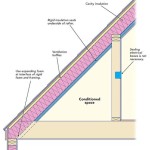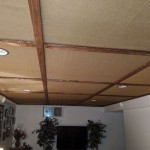Quiet Ceiling Fan Singapore: A Comprehensive Guide
Singapore's tropical climate necessitates effective and efficient cooling solutions for homes and offices. While air conditioning is prevalent, ceiling fans remain a popular choice due to their energy efficiency and ability to circulate air, providing a comfortable environment. However, a common concern with ceiling fans is noise. This article provides a comprehensive guide to selecting a quiet ceiling fan in Singapore, examining the factors contributing to noise, available technologies, and reputable brands.
Noise generated by a ceiling fan can be disruptive, affecting sleep, concentration, and overall comfort. Understanding the sources of this noise is crucial for making an informed purchasing decision. Factors contributing to fan noise include motor quality, blade design, balance, and installation.
Understanding the Sources of Ceiling Fan Noise
Several factors contribute to the noise level of a ceiling fan. Addressing these factors is essential for selecting a model that operates quietly.
Motor Quality: The motor is the heart of the ceiling fan, and its quality directly impacts the noise level. Inefficient or poorly constructed motors often produce humming, buzzing, or grinding noises. DC (Direct Current) motors are generally quieter than AC (Alternating Current) motors. DC motors offer smoother operation, lower energy consumption, and often come with more speed settings, allowing users to fine-tune the airflow and minimize noise. Look for fans with high-quality bearings and well-insulated windings to minimize noise generation within the motor itself.
Blade Design and Material: The shape, size, and material of the fan blades also play a significant role in the noise produced. Blades that are not aerodynamically optimized can generate more wind resistance, leading to a whooshing or whistling sound. Additionally, unbalanced blades can cause the entire fan to vibrate, amplifying the noise. Materials like ABS (Acrylonitrile Butadiene Styrene) plastic, plywood, or solid wood are commonly used. Softer materials can sometimes absorb vibrations better than harder ones, but proper balancing is more critical than the material itself.
Blade Balance: Even slight imbalances in the blades can create significant noise. When a blade is out of balance, it causes the fan to wobble, which in turn generates vibrations and noise. Many ceiling fans come with balancing kits that include small weights that can be attached to the blades to correct imbalances. Regular inspections and re-balancing of the blades may be necessary over time, as dust accumulation or minor impacts can affect the balance.
Installation Quality: Proper installation is crucial for minimizing noise. If the fan is not securely mounted to the ceiling, it can vibrate and generate noise. Ensure that the mounting bracket is securely attached to a structural beam or joist. Also, check that all screws and bolts are tightened properly. A loose canopy, the decorative cover at the top of the fan, can also rattle and contribute to noise.
Bearing Quality: The bearings within the motor allow the rotor to spin smoothly. Low-quality or worn-out bearings can produce grinding or squealing noises. Look for fans that use sealed ball bearings, as these are generally more durable and quieter than sleeve bearings. Regular lubrication of the bearings, if accessible, can also help to reduce noise and extend the lifespan of the fan.
Airflow: While airflow is the primary purpose of a ceiling fan, optimizing it can minimize noise. A fan designed to move a large volume of air at a lower speed will be quieter than a fan that relies on high speeds to achieve the same airflow. Consider the size of the room when selecting a fan to ensure that it has adequate airflow without needing to operate at excessive speeds.
Technologies and Features for Quiet Operation
Manufacturers are continuously developing technologies and features designed to reduce ceiling fan noise. Identifying these advancements is essential for selecting a quiet model.
DC Motors: As previously mentioned, DC motors offer significant advantages in terms of noise reduction. Their smoother operation and greater speed control allow for more precise adjustment of airflow, minimizing the need for high speeds and their associated noise. DC motors are also more energy-efficient, translating to lower operating costs.
Aerodynamic Blade Design: Advanced blade designs, often incorporating subtle curves and angles, can significantly reduce wind resistance and turbulence, thereby minimizing noise. These designs are often inspired by aircraft wings or other aerodynamic principles. Look for fans that specifically highlight their aerodynamic blade designs as a feature contributing to quiet operation.
Balanced Blades and Dampening Systems: Reputable manufacturers often pre-balance their blades at the factory to ensure smooth, vibration-free operation. Some fans also incorporate dampening systems, such as rubber gaskets or vibration-absorbing materials, to further minimize noise from the motor and blades. These systems help to isolate the fan from the ceiling, preventing vibrations from being transmitted through the structure. Self-balancing technology, where the fan automatically adjusts to correct imbalances, is also becoming increasingly prevalent.
Variable Speed Control: The ability to adjust the fan speed precisely is essential for maintaining a comfortable environment while minimizing noise. Fans with multiple speed settings, particularly those with DC motors, offer greater flexibility in controlling airflow and noise levels. Often, the lowest speed settings are virtually silent, providing a gentle breeze without any noticeable noise.
Sound Testing and Certification: Some manufacturers conduct sound testing on their ceiling fans and publish the results, allowing consumers to compare noise levels directly. Look for fans that have been certified by independent organizations for their sound performance. This provides an assurance that the fan has been tested and meets specific noise level standards. While a quantitative measurement is ideal, descriptive terms like "whisper-quiet" can also provide useful insight.
Smart Fan Technology: Modern smart ceiling fans often integrate with smart home systems and can be controlled via smartphone apps or voice assistants. This allows for even finer control over fan speed and operation, further minimizing noise. Some smart fans also have built-in sensors that can automatically adjust the fan speed based on room temperature and humidity, ensuring optimal comfort and energy efficiency.
Reputable Brands and Models in Singapore
Several brands offer quiet ceiling fans in the Singapore market. Researching these brands and their models is essential for making an informed choice.
KDK: KDK is a well-established brand known for its quality and reliability. They offer a wide range of ceiling fans, including models with DC motors and advanced blade designs. KDK fans are often praised for their quiet operation and energy efficiency. Specific models known for quiet performance include those with the "Silent Mode" feature.
Spin: Spin is a popular brand in Singapore known for its stylish designs and innovative features. They offer a variety of ceiling fans with DC motors and aerodynamic blades, focusing on both aesthetics and performance. Spin often highlights its commitment to quiet operation in its product descriptions.
Fanco: Fanco is another reputable brand that offers a wide selection of ceiling fans, including models with DC motors and multiple speed settings. Fanco fans are known for their durability and quiet performance, making them a popular choice for both residential and commercial applications. They often use advanced materials and construction techniques to minimize noise.
Acorn: Acorn markets itself as a premium brand, offering designer ceiling fans with top-of-the-line components, thus delivering silent operations. Its products are usually more expensive than mainstream brands but do come with unique designs.
Crestar: Crestar is a brand known for blending contemporary designs with advanced technology. Their range of ceiling fans often incorporates features like DC motors, aerodynamic blades, and smart home integration, all contributing to quiet and efficient operation. Crestar fans are frequently chosen for their aesthetic appeal and performance.
When selecting a specific model, it is advisable to read online reviews and compare specifications. Pay close attention to customer feedback regarding noise levels. Consider visiting showrooms to see and hear the fans in operation, if possible. Consult with retailers and installers to gain expert advice on selecting the best fan for your specific needs and requirements.
In conclusion, selecting a quiet ceiling fan in Singapore requires careful consideration of several factors, including motor quality, blade design, installation, and available technologies. By understanding these factors and researching reputable brands and models, consumers can make an informed purchasing decision and enjoy a comfortable and quiet environment in their homes and offices.

Top 8 Best Ceiling Fan Brands In Singapore 2024 Yeobuild Home

Choosing The Right Ceiling Fan With Lights 10 Factors To Consider For Prism

13 Most Recommended Ceiling Fan Models In Singapore Mr Vu

10 Best Ceiling Fan Singapore Bladeless Fans With Light

Tomax Small Ceiling Fan With Light Black 55cm Remote Control Mini Quiet Dc Motor Flush Mount 3 Color Temperatures For Bedroom Terrace Kitchen Lazada Singapore

13 Most Recommended Ceiling Fan Models In Singapore Mr Vu

Home Fanco

10 Best Ceiling Fan Singapore Bladeless Fans With Light

13 Most Recommended Ceiling Fan Models In Singapore Mr Vu

10 Best Ceiling Fan Singapore Bladeless Fans With Light
Related Posts








